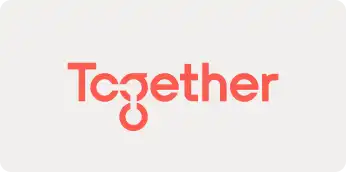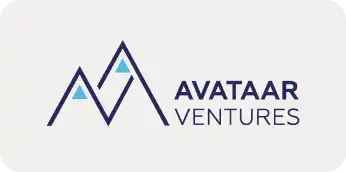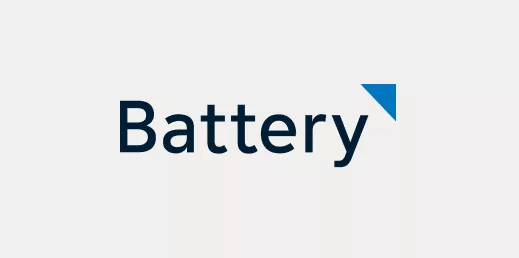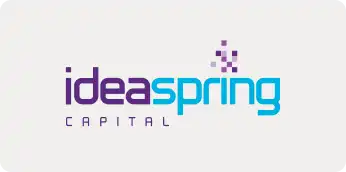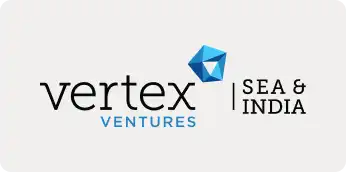We are witnessing the most brutal competitive era in tech history unfold in real time. In the last fifty days, we’ve observed every major platform transform into a digital Pac-Man, systematically consuming every adjacent market they can reach. This is the endgame of AI-powered expansion, and here’s what it means for everyone trying to survive in the maze.
The Digital Maze: How Every Platform Became Pac-Man
Picture the classic arcade game, where Pac-Man moves through a maze systematically consuming every dot in sight.
Now replace Pac-Man with OpenAI, Notion, Figma, and every other major tech platform.
Replace the dots with market opportunities.
Replace the maze with the entire digital workflow landscape.
This is exactly what’s happening right now.
Figma started in the design quadrant of the maze, methodically consuming prototyping dots, then graphics dots, then code generation dots.
Notion began in the documentation corner, devouring note-taking dots, then search dots, then email dots, then meeting recording dots.
Canva built a multi-billion business with making design accessible to everyone, now it has launched a vibe-coding tool that aims to make coding accessible to everyone.
OpenAI emerged in the AI language sector and has been gobbling up coding tools, search engines, and research platforms.
The pattern is identical across every major player.
Start with your core territory, then systematically consume every adjacent opportunity until you control the entire board.
We’re witnessing the most aggressive competitive expansion in tech history.
Companies aren’t adding features anymore; they’re consuming entire market categories in single product releases.
The message is loud and clear: Every platform has become Pac-Man, and every adjacent market is a dot to be consumed.
Why is this happening? Why now? What does it mean for the future of software?
Let’s dig in.
The method behind the madness
The AI Pac-Man game might seem like a tech version of the Hunger Games but behind this seemingly mad rush is a tale unfolding with mechanical precision.
At the heart of that tale is AI. It is a tale played out in three sagas.
First, AI has lowered the effort bar for a platform to develop and add new features to a barely believable extent. Every engineer with an AI-powered toolkit is a proverbial 10X engineer.
Next, AI has turbo-charged the velocity with which new features and products can be conceptualized and developed – an AI-powered software development life cycle is multiple times faster and shorter than the traditional model.
Finally, unlike the old world where software had to be sold, AI will be bought – there is a tremendous amount of interest from the demand side to learn about and adopt new AI tools and technologies.
This trifecta of drivers has changed the way technology companies are thinking about markets and moats.
But there is one interesting aspect of this trend that has perhaps not received as much attention as it should.
In a world like this, the most logical winners should have been the incumbent “platforms” – companies like Microsoft and Google that not only had vast horizontal solutions and a trove of rich data but also well-oiled engines to capture and monetize users.
But that has not turned out to be the case.
The early winners are not the usual suspects
Microsoft-owned Github should have been the slam-dunk winner in the AI coding agents domain but companies like Cursor, Replit and Loveable have captured the lion’s share of the market and mindshare. Microsoft Office and Google Docs should have eaten up every point-productivity application use case but there is little evidence of that.
Instead, the early winners are companies like Notion and Figma.
These companies have recognized that success requires consuming fast AND maintaining quality AND ensuring discoverability AND creating adoption flows for capabilities that users don’t know exist yet.
Google and Microsoft demonstrate this challenge perfectly.
They possess resources to consume AI opportunities rapidly, yet their products feel fragmented.
Gemini in Gmail feels different from Gemini in Docs feels different from Gemini in Sheets.
Meanwhile, smaller Pac-Man players like Notion and Figma have created more cohesive experiences across their expanding consumption territory. What is common about all these companies is that they have a deep anchor use case to lead with and can seamlessly build adjacent use cases to the same target audience. Unlike Google or Microsoft, who are sort of “decent at everything but not great at anything”.
As AI eats software, the battle is moving from point solutions to entire workflows – not just “jobs to be done” but “entire workflows to be entirely automated”. Companies that do one thing well are best suited to “eat” the adjacent use case in a given workflow – as AI agents come to the forefront, users will expect platforms to deliver not just individual tasks but entire outcomes.
The other differentiating factor seems to be the strength of communities.
Companies like Figma, Canva and Notion have very strong communities. “Hero users” – either power users or empaneled influencers are the ones seeding the initial awareness and adoption of new AI features.
Equally interesting is the fact that these companies have traditionally used the B2C2B three-step GTM motion which is ideally suited for AI applications too. An individual “hero-user” uses the new feature and then evangelizes it to his network. Multiply that a thousand times over and you have carpet-to-carpet adoption – eddies of market spread both within companies and within communities.
This is where Microsoft and Google are weak – they have strong products and market machinery but don’t have the same level of evangelical supporters and communities like the current winners.
Companies like Cursor and Loveable are now following the playbook of Figma and Canva and building out communities of their own as defensible moats.
In addition to these incumbents, we have new entrants in the maze – frontier model companies such as OpenAI that haven’t just offered APIs but have established a beachhead with consumer apps and are rapidly expanding into application use cases as natural organic extensions of the chat experience.
But if every major tech platform is a digital devourer, where does that leave startups?
This Pac-man dynamic creates a vicious cycle for point solutions: buyers prefer comprehensive suites, AI performs better without tool-switching friction, and established Pac-Man platforms can deploy entire companies as weekend feature releases crowding out startups almost completely
So how does one compete?
The startup Pac-Man strategy
For startups entering this consumption battlefield, the playbook has fundamentally changed.
In a world where incumbents move as fast, if not faster, than startups towards adopting and leveraging AI, the traditional startup strength of speed is no longer in play.
So what should startups do instead?
- Go Deep When Others Go Wide: When every large tech platform wants to evolve into a “compound company”, the only logical recourse for startups is to play a diametrically different game – focus on a single use case and go as deep as possible into excelling in that. While there will undoubtedly be competition from the big players, there is still a chance to win purely by sharp and maniacal focus.
- The Workflow Disruption Gambit: Instead of improving existing workflows, create entirely new consumption patterns that make incumbent approaches obsolete. Build something that makes CRMs unnecessary rather than building superior CRMs. Replit created an entirely new consumption workflow where you can go from idea to deployed application without leaving their platform. They didn’t build a better code editor; they built workflow disruption.
- The Unique Data Territory Strategy: Identify consumption data that’s genuinely proprietary with high marginal value for AI training. This usually emerges from deep workflow embedding where you capture intent, outcomes, and iteration data. This creates natural data territories. AI tools built for manufacturing workflows, trained on supply chain data, optimized for industry-specific business practices become incredibly difficult for horizontal competitors to replicate. The data isn’t just different; it’s fundamentally inaccessible to outsiders.
- The Prosumer Velocity Consumption: Build for individuals who can adopt immediately, pay instantly, and evangelize organically. Use this to achieve product-market fit and accumulate proof points before tackling enterprise consumption.
- The Vertical Fortress Consumption: Go deep into specific verticals where horizontal Pac-Men cannot match your domain expertise, even with AI amplification. The more specialized the consumption territory, the harder for generalists to compete.
- Create Network Effects Through Community Consumption: AI startups need to establish and leverage community dynamics to create stronger network effects and organic growth patterns. Build features encouraging knowledge sharing, collaborative problem-solving, and peer recognition. These social dynamics become competitive moats that pure technology companies struggle to replicate.
The bundle-unbundle consumption cycle
We’re observing the classic bundle-unbundle cycle, compressed into months instead of years.
AI serves as a massive bundling force: every horizontal platform uses it to justify territorial expansion into adjacent categories. This creates complexity that will eventually demand unbundling.
The timing question becomes critical. How long will the bundling consumption phase last? How patient will users be with Swiss Army knife products performing multiple functions adequately versus focused tools achieving singular excellence?
Here’s one prediction, though: the bundling phase will be shorter than expected.
Why?
Because AI makes it easier to build focused tools that integrate seamlessly with other focused tools. Instead of one platform consuming everything, we might see ecosystems of specialized AI tools working together flawlessly.
Consider this: if AI can handle most integration work between tools, why do we need everything in one platform? You could have the best AI writing tool, the best AI design tool, and the best AI coding tool, all connected by AI-powered integrations creating seamless experiences.
The platforms building the best integration layers might become more valuable than those building the widest consumption territories.
The final Pac-Man power pellet
The AI Pac-Man endgame has begun.
The question isn’t whether your product will face consumption pressure; it’s whether you can consume fast enough to define the maze rather than being consumed by it.
In this new reality, standing still equals moving backward. The only sustainable strategies exist at extremes: aggressive territorial consumption or perfect specialized focus.
The platforms winning this consumption phase might differ from those expanding fastest today. They’ll be the ones figuring out how to maintain quality, discoverability, and user love across consumption territories. That’s a much harder problem than simply consuming new market dots.
The AI Pac-Man game isn’t won by eating the most dots, it’s won by eating the right dots in the right sequence while avoiding the ghosts that can eliminate you. In this case, the ghosts are user confusion, feature bloat, and inevitable backlash when people realize they’re paying for 20 consumed territories to use 3.
The platforms that master this balance will define the next era of digital interaction.
The ones that don’t will become cautionary tales of consumption without purpose.
The maze has been drawn. Every platform has become Pac-Man. Every adjacent market is a dot waiting to be consumed. In this endgame, the winners will be those who consume with intention rather than appetite.
About Advantage India
Advantage India is a meticulously crafted collection of thought leadership blogs that delve into the transformative realm of artificial intelligence. This series explores market dynamics, emerging trends, and the pioneering journeys of AI-first startups, offering a profound lens into the evolving landscape of disruptive innovation. Explore more in this series here.
Editorial Note: The views and opinions expressed in this post are those of the contributor and do not necessarily reflect the views or positions of SaaSBoomi.












